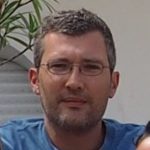Lien vers Pubmed [PMID] – 24039572
Lien DOI – 10.1371/journal.ppat.1003582
PLoS Pathog 2013 ; 9(9): e1003582
High-throughput sequencing of transposon (Tn) libraries created within entire genomes identifies and quantifies the contribution of individual genes and operons to the fitness of organisms in different environments. We used insertion-sequencing (INSeq) to analyze the contribution to fitness of all non-essential genes in the chromosome of Pseudomonas aeruginosa strain PA14 based on a library of ∼300,000 individual Tn insertions. In vitro growth in LB provided a baseline for comparison with the survival of the Tn insertion strains following 6 days of colonization of the murine gastrointestinal tract as well as a comparison with Tn-inserts subsequently able to systemically disseminate to the spleen following induction of neutropenia. Sequencing was performed following DNA extraction from the recovered bacteria, digestion with the MmeI restriction enzyme that hydrolyzes DNA 16 bp away from the end of the Tn insert, and fractionation into oligonucleotides of 1,200-1,500 bp that were prepared for high-throughput sequencing. Changes in frequency of Tn inserts into the P. aeruginosa genome were used to quantify in vivo fitness resulting from loss of a gene. 636 genes had <10 sequencing reads in LB, thus defined as unable to grow in this medium. During in vivo infection there were major losses of strains with Tn inserts in almost all known virulence factors, as well as respiration, energy utilization, ion pumps, nutritional genes and prophages. Many new candidates for virulence factors were also identified. There were consistent changes in the recovery of Tn inserts in genes within most operons and Tn insertions into some genes enhanced in vivo fitness. Strikingly, 90% of the non-essential genes were required for in vivo survival following systemic dissemination during neutropenia. These experiments resulted in the identification of the P. aeruginosa strain PA14 genes necessary for optimal survival in the mucosal and systemic environments of a mammalian host.

